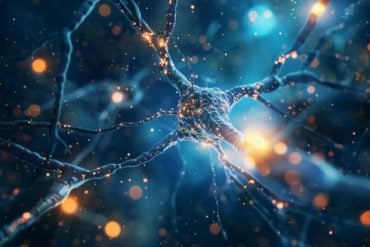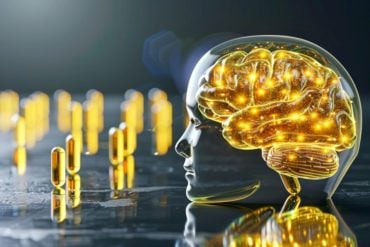Summary: Researchers discovered a link between “sharp-wave ripples” in the hippocampus and self-generated thoughts like daydreaming. These ripples, originating in the memory center of the brain, were more frequent during sleep and associated with vivid, imaginative thoughts. Understanding this brain activity could shed light on various mental conditions.
Key Facts:
- Sharp-wave ripples in the hippocampus are linked to self-generated thoughts.
- This brain activity is more common during sleep and associated with vivid thoughts.
- Understanding this mechanism could provide insights into various mental conditions.
Source: Osaka University
Part of what makes us human is our ability to think about people, places, or events that aren’t currently present—but we still don’t know exactly how our brains do this.
Now, researchers from Osaka University have identified a specific kind of brain activity linked with these kinds of thoughts, such as when we daydream or let our minds wander.
When we think about things that aren’t actually happening, like when we daydream, the brain is essentially making up information rather than receiving and processing it—for this reason, researchers classify it as a “self-generated” brain state.
In a recent study published in Nature Communications, researchers from Japan have identified that these self-generated states are associated with a specific pattern of brain activity known as “sharp-wave ripples.”
These ripples start in the hippocampus, a brain region that is essential for making and retrieving memories.
To study the relationship between these sharp-wave ripples and different kinds of thoughts, the research team made use of the information that’s collected when patients with drug-resistant epilepsy are about to undergo surgery (to remove the starting point of the epileptic activity in the brain).
Intracranial electrodes are implanted in the hippocampus in these patients and the activity in the brain is continuously tracked, so that the surgeons can identify the epileptic region and be sure that they aren’t removing a part of the brain that will have unexpected consequences.
“We asked patients undergoing this electroencephalographic brain monitoring for 10 days to complete an hourly questionnaire relating to their thoughts and emotions,” says lead author of the study Takamitsu Iwata.
“We mainly wanted to see if we could identify any links between the recorded brain activity and how the patients were feeling and thinking at the time.”
In general, the sharp-wave ripples from the hippocampus were generated in patients at night (presumably during sleep). Furthermore, the research team noticed a link between increased sharp-wave activity and thoughts that were more vivid or imaginative and less desirable or task-related, i.e. when their minds wandered.
“Notably, although our study was conducted entirely on people with epilepsy, we did our best to remove epilepsy-related data so that the results are applicable to healthy populations,” explains Takufumi Yanagisawa, senior author of the study.
“The similarities between many of our results and those of previous studies, using other species or methods, indicate that our approach worked well.”
There is increasing evidence that self-generated brain states, including mind wandering and intrusive thoughts, have complex links with intelligence, autism, attention deficit disorder, and happiness/well-being. A better understanding of the brain regions and activity that cause these states may therefore help people with a range of different conditions.
About this neuroscience and daydreaming research news
Author: Saori Obayashi
Source: Osaka University
Contact: Saori Obayashi – Osaka University
Image: The image is credited to Neuroscience News
Original Research: Open access.
“Hippocampal sharp-wave ripples correlate with periods of naturally occurring self-generated thoughts in humans” by Takamitsu Iwata et al. Nature Communications
Abstract
Hippocampal sharp-wave ripples correlate with periods of naturally occurring self-generated thoughts in humans
Core features of human cognition highlight the importance of the capacity to focus on information distinct from events in the here and now, such as mind wandering. However, the brain mechanisms that underpin these self-generated states remain unclear.
An emerging hypothesis is that self-generated states depend on the process of memory replay, which is linked to sharp-wave ripples (SWRs), which are transient high-frequency oscillations originating in the hippocampus.
Local field potentials were recorded from the hippocampus of 10 patients with epilepsy for up to 15 days, and experience sampling was used to describe their association with ongoing thought patterns.
The SWR rates were higher during extended periods of time when participants’ ongoing thoughts were more vivid, less desirable, had more imaginable properties, and exhibited fewer correlations with an external task.
These data suggest a role for SWR in the patterns of ongoing thoughts that humans experience in daily life.







